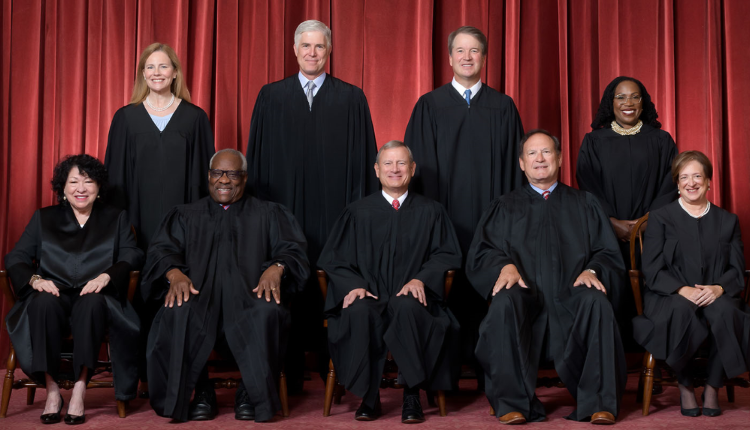Law firm's more protective test for attorney-client privilege 'is a big ask,' Kagan says

The U.S. Supreme Court as composed June 30, 2022, to present. Photo by Fred Schilling via the Supreme Court website.
U.S. Supreme Court Justice Elena Kagan told a lawyer representing a tax law firm Monday that his proposed expansive test for protecting documents under attorney-client privilege “is a big ask,” according to coverage of the oral arguments.
At issue in In Re Grand Jury is what test courts should apply when considering whether to protect “dual purpose” documents that contain legal and nonlegal advice. An unnamed law firm specializing in international tax law is fighting disclosure of dual-purpose documents sought by the government in an investigation of a client.
The unnamed client was an early supporter of bitcoin who sought tax preparation services and legal advice on the consequences of expatriation.
The New York Times, Bloomberg Law, Law & Crime and Law.com had coverage of the arguments.
A lawyer representing the firm, Daniel B. Levin, argued that courts should use a “significant purpose” test that protects documents under attorney-client privilege if obtaining legal advice was one of the “significant purposes” of the communication. That test was adopted in 2014 by then-Judge Brett Kavanaugh on the U.S. Court of Appeals for the District of Columbia Circuit before he became a Supreme Court justice.
Kagan questioned whether the significant-purpose test should supplant the prior test used in such cases.
“We’ve had the attorney-client privilege for a long time, and until 2014, nobody ever suggested that the test that you’re proposing is the right one,” Kagan told Levin.
Kagan suggested following the “ancient legal principle” of “if it ain’t broke, don’t fix it.”
The government wants the Supreme Court to use the less protective test that only gives attorney-client privilege protection to documents when their “primary purpose” is to give legal advice.
But Chief Justice John Roberts said the government test requires courts to “parse things pretty fine” by looking at all the purposes of communication and then to rank order them.
“It seems to me that your approach really puts a lot of work on the judge,” Roberts said.
Arguing for the government, Department of Justice lawyer Masha Hansford said courts applying the primary-purpose test aren’t using percentages to rank purposes of a document. Instead, courts try to get an overall sense of a communication’s purpose, Hansford said.
Justice Neil Gorsuch said Hansford’s test sounds a lot like the firm’s significant-purpose test.
“What is the disagreement?” Gorsuch asked.
The ABA supported the firm in an amicus brief. The ABA argued that clients often discuss multiple topics with lawyers that aren’t exclusively law-related, and such discussions “should be protected as a whole, not parsed sentence by sentence or phrase by phrase.”



